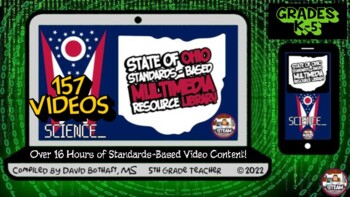REMOTE LEARNING OHIO SCIENCE (K-5): Multimedia Resource Library
- PDF
- Internet Activities
Description
Remote learning is a reality for many schools across the nation, including my own. So, how do I teach science...virtually? Understanding the sad reality that students spend upwards 7 hours a day on media, I have to adapt to make the most of the learning experience despite current obstacles. So, I have developed an Ohio state standards-based compendium of 157 short online videos to keep students connected to science content remotely. This digital document aligns online content to standards from kindergarten to 5th grade. Teachers, parents, public and private schools can use this resource as either enrichment opportunities or as a part of the overall lesson. I am in no way affiliated with these links other than using them myself in the classroom and remotely. The purchaser of this document understands their responsibility to review videos (and advertisements) before sharing links with students.





